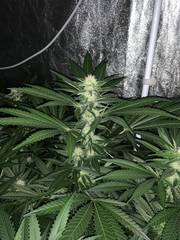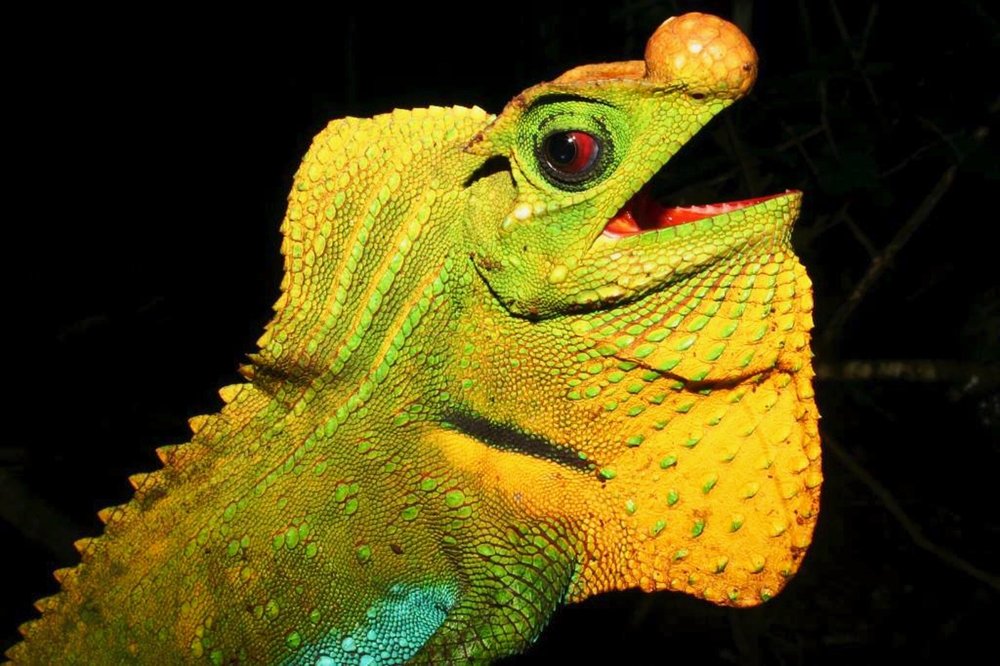-
Posts
280 -
Joined
-
Days Won
4
Content Type
Profiles
Forums
Calendar
Gallery
Articles
420 Directory
Classifieds
Posts posted by Budwizer
-
-
-
Sounded like you were trying to be scientific with all your measurements.
Sent from my G3312 using Tapatalk
When you have instruments to measure with, you can easily determine huge differences without having to be scientific about it. Anyone who doesnt have a quantum meter talking about lights, specifically LED, since HPS is an established and well documented technology, is bullshitting themselves.
You cannot convert lux/lumens to get PAR Flux.
I will say this: my experience, backed by measurements indicates that small op growers place FAR too much importance on BIG lights. Beyond 700umol/m2/second, 95% of home growers are wasting money. Without supplementing CO2 and controlling all the other things that go along with that. If youre not pulling 1g/w, its not your lights, its you. Before anyone says anything: are you covering your canopy with 700umol/m2/sec? How did you measure? Your auntie told you? OK.
-
 1
1
-
-
Look, I respect your professional opinion. As I said, we werent scientific about it. It could have been closer to 800mm. Nontheless, that light is a monster. If you ever get your hands on one, youll see.
-
We did a bit of a write-up on this topic, if you want a summary of [plant and lighting science].
and there's also "What's the difference between LED/HID/CFL technologies?" further down the [main FAQ].
We will be starting a side by side grow next week, when the clones are ready.
In the one tent, 3W LEDs (monochromatic Epileds and white Bridgelux) in a 2:1 ratio of our flowering spectrum to our veg spectrum.
And in the other tent, our Samsung QBs & Cree reds, done in the horticultural spectrum (2 white : 1 red) as advised by Cree.
600W vs 600W.
The QBs and Crees should trounce the 3W LEDs, but it'll be a good experiment anyway.
I expect the monochromatics should compete well in veg, but that the QBs & Crees will crush it in flower.
In my experience so far, Vero29 COBs plus Cree XPE-HEs get over 1g/W pretty easily.
One customer recently claimed 1.4g/W, which is very good.
This will be our first test of the QBs & reds, and I expect similar results to the COBs + reds.
I have never actually used HPS, but in my opinion, it's old tech. Double ended gavita pro has max 40% wall plug efficiency before taking into account cooling. That just won't compete with 60-70% wall plug efficient LEDs. Combining LED and HPS is pretty successful, anecdotally. One customer says they're getting superb results with 3W LEDs supplemented with 15 minutes of HPS every 2 hours.
PS. Budwizer's claim, "1000 umol at about 1 meter", is very unlikely (the VyprX technical spec says 750uMol at 45cm which would be measured dead center. At double that distance, it would be a quarter of that. Less than 200 uMol).
Although we werent very scientific about it, that was approximately the reading I got. Youve got one thing wrong: “which would be measured dead centre”. Thats not how Fluence, or any other reputable LED manufacturer specs a light. The 750umol spec is the averaged PPFD over the coverage area at 45cm. Dead centre gives the readings I mentioned. Dont take my word for anything- take your own 15k quantum meter and measure for yourself.
-
Shot. I think the 2 sanight s2w will do the trick for me. And JA thank you for the education. I got more than I bargained for.
Sent from my VTR-L09 using Tapatalk
The Fluence Vyprx Plus is 4 times the light of an S4W at twice the price. You will be wasting some energy in a small box, but you will have invested in a better light if you ever want to grow in a bigger space.
I measured 7000+ umol at 15cm from the Vyprx! 1000 umol at about 1 meter! Thatll get you some decent coverage, but it is a bit too much for a really small space.
So, depends on your current space, your future plans, and your budget. Dont forget, you can get some good mileage from 3 S2W in a 60 x 120 cm box, and save 3k over two S4Ws.
-
Its not about which form factor is brighter. Its about which one can get the most even coverage to the canopy, at the least wattage, and heat output. Heat is wasted energy.
Just look at the best lights on the market- diodes spaced out over a large surface area. Think SANlight, Fluence, etc.
You dont need powerfull diodes when youre spacing them out evenly over the canopy. 3w diodes running at 55% put out plenty enough PPF to give me 800+ umol at 20cm OVER THE ENTIRE CANOPY. A cob can easily do 800 umol, but only over maybe 2 x2 feet. At the edges, it’ll be far less.
Yes, rand for rand, cobs are better for cabinet and small tent growers. You’re only covering maybe 1m^2.
When you start getting into larger areas, wasted wattage adds up.
Think about watering a lawn. Do you use a fire hose to water a lawn? No. A fire hose can definitely deliver enough water. So why not? It delivers too much water at one place. Cannabis can only use so much light per second. You can blast them with 1000 umol, but they will only use about 700 umol efficiently. The rest is wasted energy. I’m talking sans CO2.
Rather water the lawn with a sprinkler. It delivers the water at a speed that allows the soil to take the water in efficiently, without wasted runoff. Many diodes spaced evenly over the whole canopy is like the sprinkler. Targeted PPFD. No waste, no heat.
-
 1
1
-
-
So what brands of lights do you use?
Sent from my VTR-L09 using Tapatalk
I run 2x 600w HPS and 3x SW4 in a 2,4 x 1,2 tent. HPS for shear power, LED for frost.
Works good.
Saving up to replace the above with 2 x Fluence Vyprx+ fixtures. Took umol readings at the store last week. HPS is dead.
-
 1
1
-
-
Not necessarily, there are some good lights out there still using diodes, just ensure they using from reputable manufactures.
Here is something to consider, an extract to read through to guide you along the way.
When you’re choosing a grow light, ignore the specs on lumens. Lumen ratings are to measure brightness for human eyes. Pay more attention to specs like PAR and wattage as well as the manufacturer’s guidelines on coverage.
PAR stands for photosynthetically active radiation. It’s the light’s intensity as well as what colors it emits. Broad-spectrum bright light will make your cannabis thrive. PAR measures light emitted in the 400nm to 700nm spectrum. That’s from the blue end up through red and into infrared.
The higher the PAR number, the more useful the light is for growing. Some LED grow light manufacturers say their panels put out nearly 100% usable light. None of it is wasted by going to heat instead of light like metal halide or high pressure sodium lamps.
Most manufacturers say something like their light covers 2.5 feet by 3 feet at a height of 18 inches. When you’re sprouting seeds, you don’t need intense lighting. But when you’re flowering, you will. Pay attention to those specs on area covered because you don’t want to be 8 weeks into growing and realize your light isn’t strong enough to encourage blooming.
A panel that might be bright enough when hung two feet above your soil for sprouting a lot of seeds might not cover enough area when lowered down to 12 to 18 inches height for flowering. Buy your panel based on how many plants you want to bloom unless you’re only purchasing just for sprouting.
In summary, look at these specs:
Area covered
PAR
Wattage — How much power does the light draw at the wall? What’s your electric bill going to be? The higher the wattage the higher the yield in theory.
Sent from my ALE-L02 using Tapatalk
Theres still a lot of misinformation floating around, and while you’re on the right track Justin, lets get the terminology right, so everyone can get on the same page regarding LEDs.
First off, the best LED grow lights will alway use diodes. The reason is simple- diodes have become powerfull enough that they work well, and prices will only come down. COBS work very well, but since they are a point source, they cannot give you optimum coverage. Many diodes spaced intelligently, kept at the correct distance will beat COBS all day long. They run cooler, and are more efficient overall.
PAR is Photosynthetically Active Radiation. It is not a measurement of intensity. PAR only defines the spectrum. PPF- Photosynthetic Photon Flux is a measurement and tells us how many PAR photons a light emits per second. PPFD-Photosynthetic Photon Flux Density is a measurement of how many PAR photons are landing on a given area per second. Think of it like a birdshot shotgun shell. The balls are the shells PAR. The shell has only so many little lead balls in it (PPF). If you shoot those balls at an object close to the muzzle, they all hit close to each other, in a concentrated pattern (High PPFD). Fire at an object further away, and the balls will disperse and land over a larger area (Low PPFD).
-
 2
2
-
 1
1
-
-
250 ml per plant. Prolly every 3rd day, maybe longer, maybe less. Don’t let them get totally dry. Try nutes every second watering.
-
Not fungus gnat larvae, maybe fruit fly.
Yes, those are pre- flowers, and congrats! It’s a girl!
-
-
In awe bud!
-
Its hard to stop yourself sometimes from snapping one off quickly where as a little tuck away would of been a solution.



-
-
No worries, they’re clean.
-
It looks like those Sanlights are QBs on their proprietary ally profile, doesn’t it. The P4 in Spectrum 2 version is pushing 3,3 umol/j. Pity I’m not in CT. I understand things best when I hold them in my hand. Growopz website leaves a lot to be desired.
I’m hoping to make the whole operation more efficient. It’s so stupid putting a KW of heat into the space, and then canceling it out with another KW of cooling. I could use that money on a serious CO2 rig.
-
I was talking about the fuss the guy in the video was making. Surely he knows what’s out there? As for colour rating or CRI, the Vero’s I browsed over had similar specs.
I’m torn between Gavita and Sanlights atm. Very different techs I know. I’ve see now that cobs don’t produce as much light as big HPS. You need a few of them to match the lumens.
I’m willing to spend

 on decent lighting going forward. Maybe I’ll do two Gavita 6/750s and two Sanlight P4s. Maybe 6 P4s? If I can get away from using the aircon, it’s a win for me. The aircon is a little over a KW energy use. I’m willing to look at COBs but I’m still not convinced about their benefits. Honestly, haven’t done much research. Also, I’m quite capable of DIYing shit, I have a dream workshop, but there’s something to be said for plug’n’play.
on decent lighting going forward. Maybe I’ll do two Gavita 6/750s and two Sanlight P4s. Maybe 6 P4s? If I can get away from using the aircon, it’s a win for me. The aircon is a little over a KW energy use. I’m willing to look at COBs but I’m still not convinced about their benefits. Honestly, haven’t done much research. Also, I’m quite capable of DIYing shit, I have a dream workshop, but there’s something to be said for plug’n’play. -
Excellent Narnia!
-
I had a quick look at Bridgelux’s site. I see what you mean. What I don’t get is what all the fuss is about the Yujiled then. It’s inefficient, and bulky due to the heatsink. Why even bother? What’s the price of a 23000lux COB in the 150watt range?
-
Those Criticals are really nice plants. The buds on mine are getting just massive, with almost no leaf. Packing on the trichs and weight. And the smell! Got a little cat pissy thing goin- if you know what I mean. I’m definitely running those again!
So what’s happening in Narnia? You found the White Witch yet?

-
Here’s the spec sheet. You can get it in 3200k & 5600k.
-
And 8k isn’t a crazy price either. Even at 10k it would be in line with what you pay for a quality HPS setup. Running two, you’ll burn about 1100 watt, adding power supply losses. If I were running two of these, I could get away with not using the aircon. If you get 50000 hrs lifespan, you’re WAY ahead.
-
I’m thinking you’ll just begin seeing amber. That’ll be the right time.
-
Bet it’s still cooler than a 400w HPS, and more light than a 1000w. I might just get me two.










Please help with problem
in Indoor Growing
Posted
Ca deficiency
Coco
PH a little low- why aren’t you following the GHS powderfeed recommendations? You should be running 5.7